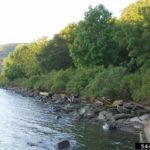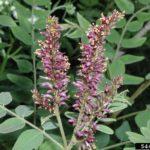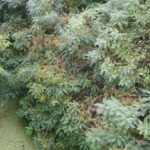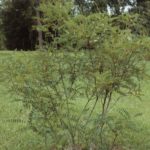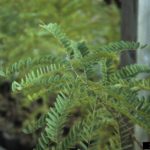Gallery:
- False Indigo Bush along a river
- False Indigo Bush flowers
- False Indigo Bush in flower
- False Indigo Bush
- False Indigo Bush leaves
Common names:
False indigo bush, indigobush, false indigo, desert false indigo, dullleaf indigo, leadplant
Scientific Name:
Amorpha fruticosa L.
Description:
False indigo bush is a perennial shrub in the Fabaceae (pea) family. While it is native to the Great Plains of the North America, it is typically considered invasive in the Northwest, as it can form dense thickets in riparian areas. It is a fast growing legume that produces its own nitrogen, giving it advantages over other plants. Leaves are compound with 9-31 leaflets and young stems are green and hairy. Flowers are purple and showy, growing in dense upright clusters. One to two seeds grow in pods that are curved and dark brown. The seed pods float, so it easily disperses along waterways.
Life cycle:
Height of mature plants
10 – 14 feet
Flower color:
Blue to purple
Bloom time:
July
Look-a-likes:
The leaves of false indigo bush are similar to those on a black locust tree, though false indigo bush is more of a shrub and lacks the thorns of a black locust. False indigo can also be confused with other plants in the pea family, especially licorice plants.
Habitat:
False indigo bush grows best along streams and rivers, where it can form dense thickets, but it will also grow in prairies and on sandy roadsides. It prefers partial to full sun.
Impacts:
False indigo bush forms dense thickets that out-compete other native plants. It can grow quite aggressively in riparian zones, where it can not only create a physical barrier to waterways, but can out-compete willow trees that many birds depend on. It is also very difficult and expensive to remove.
Noxious Weed Listing:
- WeedWise: no status
- State of Oregon: Class B
- State of Washington: Class B
- Four County CWMA: not listed
- Columbia Gorge CWMA: Class B
Origin:
Great Plains of North America
Links:
Oregon Noxious Weed Profile
Washington Noxious Weed Profile
Eddmaps Profile

